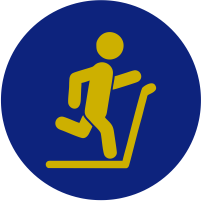Shoulder Resurfacing Surgery
What Is Shoulder Resurfacing Surgery?
Shoulder resurfacing is an alternative to a total shoulder replacement for patients who are young and have active lifestyles.
Rather than cutting and replacing the two bones (humerus and scapula) in the joint, the damaged top of the arm bone (the humeral head) is replaced with a hemispheric metallic head.
This gives a new surface to the ball of the joint while allowing much of the natural bone to remain intact. The resurfacing prosthesis is affixed to the bone after the diseased or injured portion is removed.
The prosthesis is shaped like the ball of the upper arm, which fits into the shoulder socket forming the shoulder joint. The metal ball of the upper arm prosthesis is connected to a metal stem. The metal stem is inserted down the center of the upper arm or humerus, and is cemented in to secure the replacement metal head in place. The humeral head replacement fits into the reshaped socket, creating greater shoulder joint stability and, upon recovery, restoring pain-free, full range of motion to the shoulder joint and arm.
Shoulder resurfacing may offer more bone retention, and if future revision surgery is necessary, the surgery is less involved making the recuperation much faster for the patient. The injured or diseased shoulder joint must not be too advanced for this procedure, patient selection is critical to optimal success.
Who is a candidate for shoulder resurfacing?
As a more conservative procedure, shoulder resurfacing may be ideal for those who need help alleviating pain and increasing mobility, but don’t need a total replacement yet.
Resurfacing can be used in patients with mild to moderate arthritis that is confined to the humeral head. It can be ideal for people experiencing the following:
- Osteoarthritis
- Rheumatoid arthritis
- Avascular necrosis
- Rotator cuff disease or injury
- Post trauma arthritis
What are benefits of having shoulder resurfacing?
Shoulder resurfacing is generally thought of as an alternative to total shoulder replacement. Only skilled physicians can determine if this procedure is appropriate for a patient. If your surgeon recommends shoulder resurfacing to be the best option for you, there are several benefits to having shoulder resurfacing:
- Restoration of normal anatomy
- Less-traumatic surgery
- No risk of fat embolus from surgery trauma
- Resurfacing can be done even if the bone is deformed
- No risk of fracture at the tip of the prosthesis
- Quicker recovery with less pain
- Easy revision surgery if needed
What should patients expect after shoulder resurfacing?
Patients who receive shoulder resurfacing usually stay in the hospital one to two days. On the second day, the bandages are removed and limited exercise is started to facilitate recovery.
A sling must be worn for up to six weeks and a few weeks of exercises at home are needed to restore motion to the joint.
Total recovery depends on the person, but many are driving after two to six weeks and golfing after three months. High-contact sports are generally not allowed because it could lead to complications.
Our team is here for you
We offer the best, least invasive and least aggressive options to relieve your pain and symptoms so you can get back to the life you love. Atlantic Orthopaedic Specialists Hand, Wrist, Elbow and Shoulder Care Center has convenient locations in Virginia Beach, Norfolk and Chesapeake.



